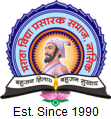Title of the practice:
To educate patients about cough etiquettes.
Objectives of the practice:
- To educate the general public about the cough etiquettes.
- To educate general public about the diseases spread by airborne route.
- To educate general public about the techniques to curb the spread of airborne infection.
- To spread awareness in the society about the cough etiquettes.
- To change the the behavior of people to curb TB spread.
The Context
Hospital is the important place for spread of airborne infection. Evidence suggest that if appropriate cough etiquettes are followed then the spread of airborne infection can be prevented. In recent times influenza H1N1 spread in the community and spread by airborne route. Other diseases like TB, influenza , chicken pox, measles, SARS, and recently Corona virus infection spreads by airborne route. In effectively preventing spread of infection, people education is the only tool. Audiovisual aid and lectures to the people are the means to do that. People come to hospital with health as the main concern and they are they are more inclined towards listening to the health messages directed towards them.
Challenging Issues
Large no. of patients and community needs to be educated
The Practice
Cough etiquettes technique demonstration is done by audiovisual aids. Patients are also shown the live demonstration. The session is arranged once in a week for 10 minutes in the morning hours.
Administrative Measures-
- To identify patients with respiratory complaints and segregate them at appropriate places. Patients having respiratory complaints are asked to go directly to chest OPD.
- Ask them to put masks. Surgical masks are made available at the medical store.
- To fast track the patients with respiratory complaints in a health facility to decrease the time of exposure the other patients.
- Diagnose treat them with minimal delay –patients with these complaints are attended quickly.
- Infection control plan and SOPs are made available.
- Health care worker education and training including laboratory staff etc. All concerned healthcare workers are trained appropriately to understand the process that is followed in the hospital about the cough etiquettes.
- Patient education.
Environmental Measures
Natural ventilation maximized in high risk areas like Respiratory Medicine, Medicine and Pediatric outpatient department.
Negative pressure ventilation is proposed at Respiratory Medicine department .
Personal protective equipment’s–Healthcare worker respiratory protection (N95 mask)
Evidence of Success
- Very essential in control of epidemics like influenza H1N1, Coronavirus infection.
- Effective in control of spread of tuberculosis including MDR tuberculosis.

